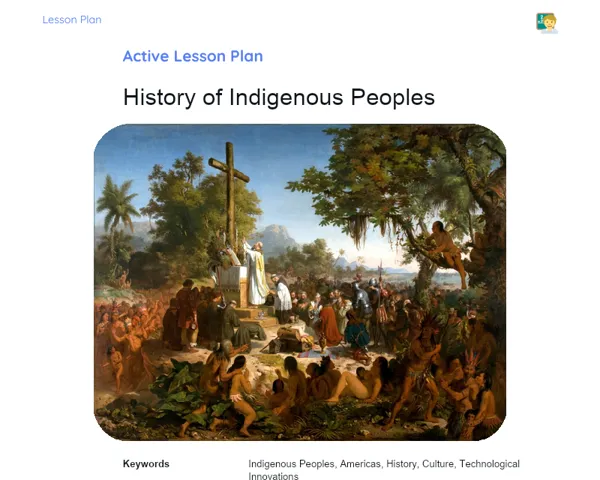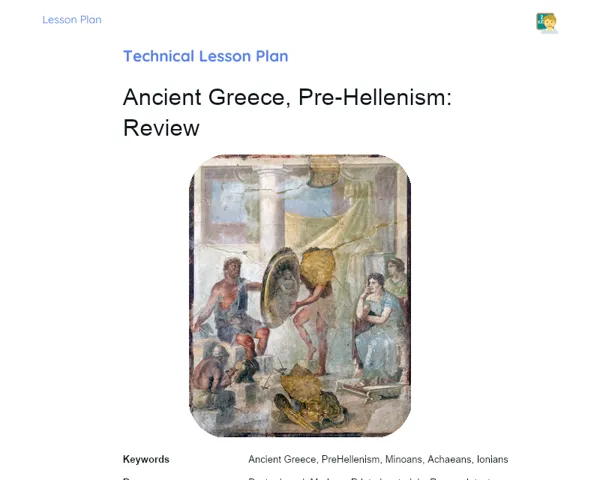Lesson Plan Teknis | Family and Community
| Palavras Chave | Family, Community, Role, Responsibilities, Reflection, Practical activity, Collaboration, Model, Job market, Social development, School, Skills |
| Materiais Necessários | Short video about families and communities, Cardboard, Glue, Scissors, Paints, Craft materials, Drawing paper |
Objective
Duration: (10 - 15 minutes)
The aim of this segment is to ensure students have a clear grasp of the lesson objectives, connecting them to their everyday lives. This understanding is essential for them to cultivate practical skills such as identifying and comparing roles and responsibilities, which are crucial for their social interactions and future career paths.
Objective Utama:
1. Outline the roles and responsibilities of students within their families, schools, and communities.
2. Contrast these roles and responsibilities with those of others in different environments.
Objective Sampingan:
- Encourage students to reflect on the importance of each role for the smooth functioning of the community.
Introduction
Duration: (10 - 15 minutes)
The purpose of this stage is to ensure that students clearly grasp the lesson objectives, situating them within the practical context of their everyday lives. This comprehension is key for them to develop practical skills such as identifying and comparing roles and responsibilities, which are necessary for their social interactions and future employment.
Curiosities and Market Connection
Did you know that many skills developed at home and school have direct relevance in the job market? For instance, the teamwork skills honed through family activities and school projects are invaluable in nearly every profession. Similarly, qualities such as responsibility and organisation, which are nurtured within the family setting, are highly regarded in the corporate arena. Careers in project management, social work, and education, for example, clearly illustrate the real-world application of these skills.
Contextualization
Family and community represent the initial environments where children start to comprehend their roles and responsibilities. From a young age, they learn to work together, adhere to rules, and develop social skills that will stand them in good stead throughout their lives. School serves as an extension of this learning, facilitating interaction with a variety of people and fostering a strong school community. Recognising these roles is vital for the personal and social growth of students.
Initial Activity
To kick off the lesson, showcase a short video (3-5 minutes) that depicts various types of families and communities across the globe, underscoring the diversity and importance of each member's roles. After the video, pose a thought-provoking question: 'Can you pinpoint some responsibilities you have at home and at school? How do these responsibilities contribute to our community?'
Development
Duration: (45 - 55 minutes)
The purpose of this section is to provide students with a hands-on and thorough understanding of the roles and responsibilities within families, schools, and communities. The activities designed foster collaboration skills, critical thinking, and the practical application of the insights gained, preparing them for social interactions and future integration into the job market.
Topics
1. Roles and responsibilities in the family
2. Roles and responsibilities in school
3. Roles and responsibilities in the community
4. Comparison of roles in different contexts
Thoughts on the Subject
Encourage students to think about how the different roles they play in their families, schools, and communities are vital for the smooth operation of these environments. Ask them to consider how each of these roles can be compared and contrasted with the roles played by others in the same contexts. Inspire students to reflect on how their individual responsibilities contribute to the overall well-being and what might happen if someone neglects their responsibilities.
Mini Challenge
Building Our Community
In this hands-on activity, students will construct a model of a community, incorporating homes, a school, a hospital, a park, and other essential elements. Each student will be tasked with creating a specific part of the model that represents a role or responsibility in the community.
1. Divide the class into small groups and distribute materials like cardboard, glue, scissors, paint, and other crafting supplies.
2. Explain that each group will be responsible for creating different sections of the community (e.g., one group designs the houses, another the school, another the park, etc.).
3. Prompt them to discuss the responsibilities and roles represented in their constructions (e.g., who resides in the houses, who contributes at the school, etc.).
4. Guide students in assembling the model as a whole, placing each element in its correct position within the community.
5. After the model is complete, each group will present their section, elaborating on the roles and responsibilities associated with each part.
The aim of this activity is to enable students to collaboratively and practically visualise the various roles and responsibilities present in a family and community. This consolidation reinforces the significance of each member and their contribution to collective well-being.
**Duration: (30 - 40 minutes)
Evaluation Exercises
1. Draw a picture of yourself and your family at home and jot down your responsibilities.
2. List three responsibilities you hold at school and explain their importance.
3. Describe a responsibility that an adult in your community has and how it benefits everyone.
4. Explain how a responsibility at home can mirror a responsibility at school or in the community.
Conclusion
Duration: (10 - 15 minutes)
This stage aims to reinforce learning, ensuring students comprehend the connection between theory and practice, as well as the importance of roles and responsibilities in families, schools, and communities. This understanding is crucial for them to apply this knowledge in their daily lives and future careers.
Discussion
Facilitate an open discussion with students about what they have learned during the lesson. Ask how they felt while constructing the model and identifying the roles and responsibilities. Encourage them to share examples of responsibilities they hold at home, school, and in their community, and how these responsibilities contribute to the proper functioning of these environments. Discuss the significance of collaboration among all community members for collective well-being.
Summary
Summarise the key points discussed during the lesson: the roles and responsibilities in families, schools, and communities, and how these roles interlink. Stress the importance of each member fulfilling their responsibilities and how this aids in the effective functioning of the community. Highlight the similarities and differences in responsibilities across different contexts.
Closing
Clarify to students how the lesson bridged theory with practice through the model-building and discussions. Reinforce the importance of understanding and fulfilling responsibilities for the benefit of all and how these skills translate into both daily life and the job market. Wrap up by underscoring the relevance of the topic for their personal and social growth.


